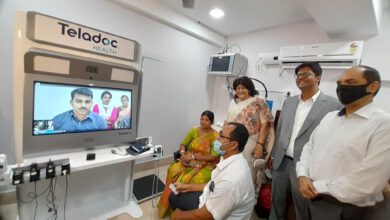Treatment of Diabetic Foot Ulcers with AI enabled tissue regeneration bio-patch

Diabetic foot ulcers are sores or wounds on the foot and are often a strong indicator of advanced diabetes. Most commonly, these wounds occur on the bottom of the foot under pressure points (such as the ball of the foot) and on the toes. In India, 32 million people have diabetes. Rough estimates indicate 40,000 lower limb amputations per year, most of them due to diabetes.Patients with Diabetic Foot Ulcer (DFU) have an greater all-cause death risk as compared with patients with diabetes without a history of DFU.
Belle Vue Clinic, Kolkata, has introduced Artificial Intelligence-enabled tissue regeneration bio-patch to help heal diabetic foot ulcers, for the first time in eastern India. Diabetic foot ulcers are dreaded for recurrence and delayed healing. The patients suffering from diabetic foot ulcers have inadequate blood supply in their limbs and for them surgery is fraught with risk while the success rate is low.
Shri Pradip Tondon, CEO, Belle Vue Clinic, saidthe Clinic is the first healthcare institution in eastern India to introduce the AI-enabled tissue regeneration diabetic foot ulcer surgery, much to the relief of diabetic patients and their family members. He welcomed the Korean team of tissue regeneration experts who are doing considerable cutting-edge research on this subject.
Dr Rajan Tondon, eminent plastic surgeon and spearheading the project, said 4D bio-printing (utilizing natural tissues in the body and combining 3D printing with patient’s fat cells) is a reality in treating chronic wounds like diabetic foot ulcers, avoiding conventional reconstructive procedures. Conventional procedures require prolonged hospitalization and several surgical interventions.
Nanofat (prepared from the patient’s fat grafts) and bio-inks are combined to create the ECM biopatch utilizing DERRIM Kits, introduced in India by Alkem Medtech. Extra-Cellular Matrix (ECM) is an intricate network composed of an array of multi-domain macromolecules, organized in a cell/tissue-specific manner. Components of the ECM link together to form a structurally stable composite, contributing to the mechanical properties of tissues.
“In future, we could be looking at customized composite tissue regeneration to meet the needs of trauma, cancer and birth defects”, Dr Tondon added.
The Korean team of tissue regeneration experts responded to questions by media representatives and explained the intricacies of the project.




